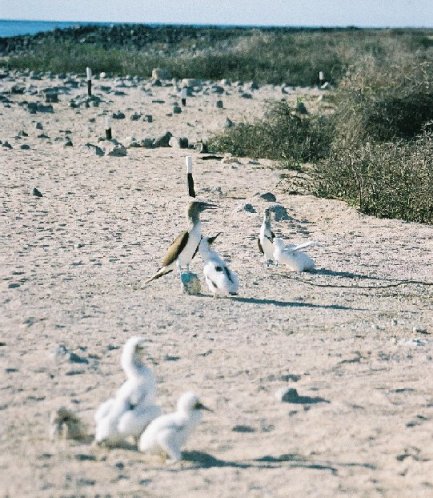Isla North Seymour
North Seymour is a small island in the center of the chain just off shore from Santa Cruz.
Kelly and I with a male frigate bird in the background.
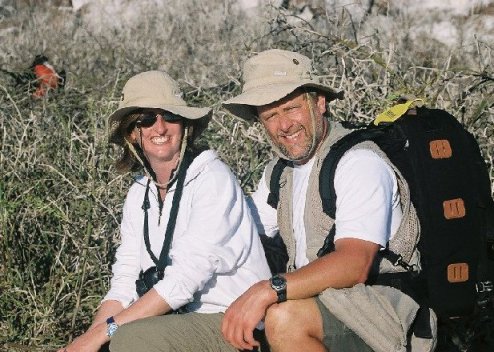
Photo of one of my dive buddies.

Blue Footed Boobie.

Red Footed Boobie in flight.

This sequence of the next five photos shows a Swallow-tailed Gull yarking up a fish to feed her hungry chick.
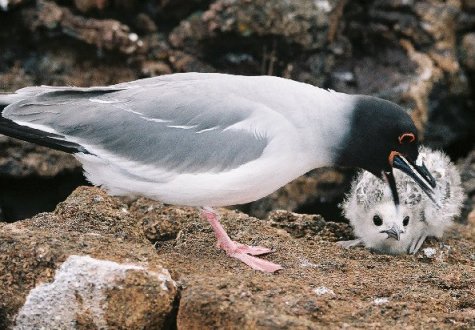
It took her quite a while to cough this thing up.

The fish was almost as long as the baby chick.

I wasn't able to get a shot of the chick swallowing the fish, but I was quite amazed that it could swallow something that big whole.

The Galapagos islands were made famous by Charles Darwin. Several species (Darwin finches) and locations (Darwin lake, Darwin bay) were named after him. There are alot of myths and misinformation about Darwin and the Galapagos.
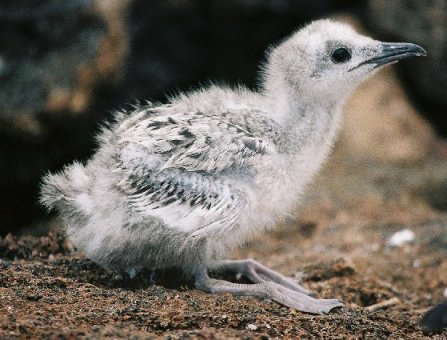
Darwin traveled to the Galapagos in the 1830's aboard the HMS Beagle lead by Captain Fitz Roy. The mission of the HMS Beagle was to map South America, not to explore the Galapagos. Darwin was merely a guest on board, not the official Naturalist. The entire mission lasted nearly 5 years, however they only spent 5 weeks in the Galapagos islands. Of that 5 weeks, only half that time was spent on land exploring and collecting samples.

So, Darwin only spent 2.5 weeks on the Galapagos islands during one trip, and never returned again.
The book that first made Darwin a respected naturalist: The Voyage of the HMS Beagle contained only one chapter on the Galapagos islands. He did not publish his most famous book The Origin of the Species until many years later.
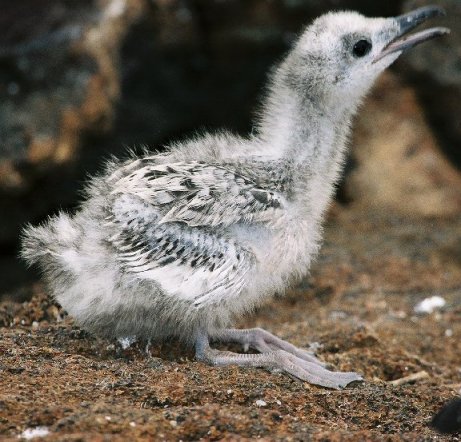
Darwin was not the first person to postulate the theory of evolution. A Frenchman named Jean-Baptiste Lamarck and Charles Lyell floated the idea many years earlier. They were mostly dismissed or labeled as heretics. Darwin was merely the first person to make a strong scientific case and gain any credibility for the idea.
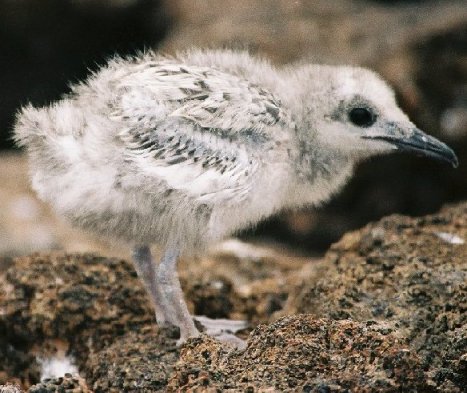
Darwin's father was a wealthy physician and encouraged the younger Charles to follow in his footsteps. Charles flunked out of medical school and was an embarrassment to his father. He then went to seminary school and was equally disillusioned with that. He had a huge interest in studying birds, insects, and plants, and wanted to be a naturalist.
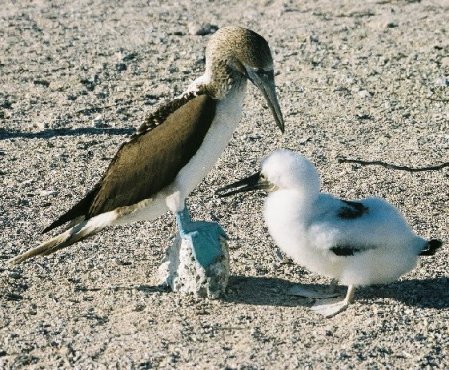
Darwin's family wealth and notoriety were instrumental in getting Charles on board the HMS Beagle. His father considered him a disappointment and was glad he was sent away. He later won his fathers favor when the notes he sent home from the HMS Beagle gained popularity at a local university.
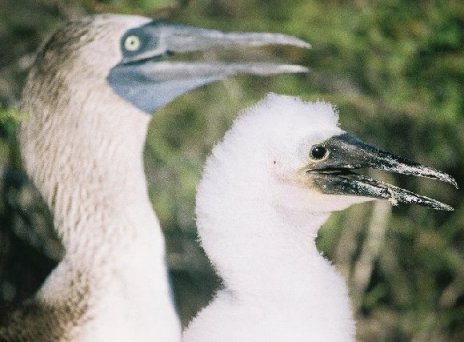
Charles Darwin apparently didn't appreciate the value of genetic diversity, because he eventually married his cousin Emma Wedgewood. Emma was an accomplished pianist (perhaps because she had six fingers on each hand?) and her family was very wealthy also (Owners of the Wedgewood China company). This wealth allowed Darwin to continue his studies in evolution instead of having to get a real job like the rest of us.

Darwin wrote the basics of The Origin of the Species in the 1840's, but did not publish it because earlier authors were labeled as heretics for similar ideas.
One of his children, Anne Elizabeth Darwin, died at the age of ten of tuberculosis on April 22, 1851. It was Anne's slow, horrible death that radically altered Darwin’s belief in Christianity. He lost another child, Charles Waring Darwin in 1858. He decided to published his book in 1859.
